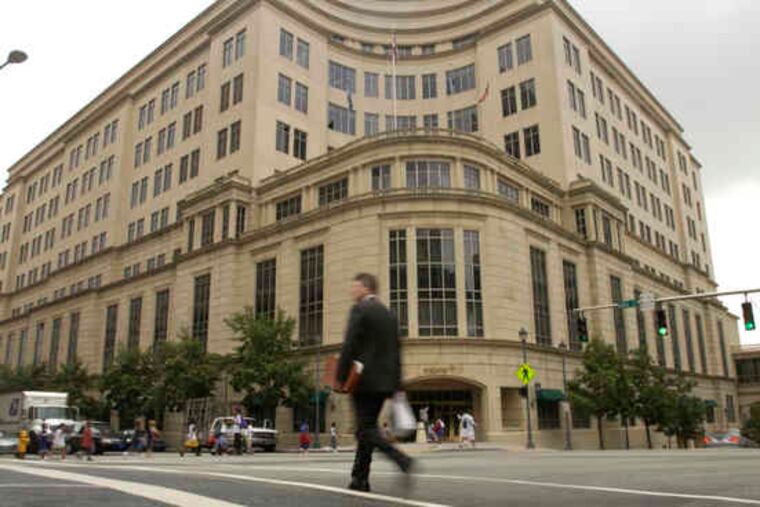Consumer 10.0: Why consumers need an independent CFPA
It was 2003 when I first encountered Larry Hrebiniak, a management professor at the University of Pennsylvania's Wharton School. But his story could be Exhibit A in the case for why an independent Consumer Financial Protection Agency - an agency charged with protecting individuals and families from risky financial products - should be a keystone in this year's urgent drive for financial reform.

It was 2003 when I first encountered Larry Hrebiniak, a management professor at the University of Pennsylvania's Wharton School. But his story could be Exhibit A in the case for why an independent Consumer Financial Protection Agency - an agency charged with protecting individuals and families from risky financial products - should be a keystone in this year's urgent drive for financial reform.
Hrebiniak was a savvy manager of his personal finances. Wharton doesn't hire slouches. But as careful as he was, he got burned by an increasingly aggressive credit card industry.
The short version is that Hrebiniak had a MasterCard from MBNA Corp. (now part of Bank of America Corp.) with an 8 percent interest rate and a $15,000 credit limit. The trouble was, he took MBNA at its word.
Faced with some blips in his family finances, Hrebiniak decided to carry a $10,000 balance for a month or two. At 8 percent annual interest, it made financial sense - or seemed to, until MBNA suddenly doubled his rate.
MBNA never gave him a reason, because it didn't have to: the bank raised his rate under a contract clause that allowed it to change terms "at any time for any reason." But it wasn't hard to piece together what had happened, in all its Catch 22-like splendor.
As they do today, card issuers claimed to set rates based on individuals' statistical risk of default, which they used credit scores to predict. Carrying a balance, even briefly, was enough to cut his score. For MBNA, that was adequate grounds to double his rate. After all, "any time for any reason" pretty much means, "We can do whatever the heck we want."
Hrebiniak's take was that MBNA was playing an elaborate game of bait-and-switch: Offer good rates, then figure out how to raise as many people as possible to default or penalty rates.
Why does this seven-year-old story matter today?
Because of what happened - and what didn't happen - next.
Unfair and deceptive
Hrebiniak was able to pay off his balance and close the account. But in sympathy with consumers who lacked that easy out, he complained to the Office of the Comptroller of the Currency, the federal agency that oversees national banks. So did thousands of other consumers.
And a little more than a year later, the OCC finally acted: It issued an advisory letter, with a stern admonishment to credit card banks. Basically, it told card issuers to do a better job of warning customers they could be shafted.
Ultimately, federal regulators and Congress finally labeled such rate increases what they were: unfair and deceptive. But that came more than five years after Hrebiniak's complaint, and after untold damage to consumers and household finances.
The same story was repeated over and over: Lured by low rates, some consumers predictably fell into a hole. And if they slipped up, a small hole became an inescapable trap. Sometimes all it took to trigger a penalty rate of 30 percent or more was being a day late in a single payment to a different creditor.
Nor did it stop with credit cards. Spurred by rising home prices, lenders started offering cash-strapped consumers an out: debt consolidation via home-equity lines of credit or cash-out mortgage refinancings.
Suddenly, dinner and a movie were being paid off via a 30-year mortgage, and homeowners were falling prey to equity-stripping mortgage scams. As with credit cards, ugly things were happening in the mortgage marketplace, and regulators were largely looking the other way.
Plugging a regulatory hole
There are many layers to the mortgage mess and the financial problems it exposed, and reform also has to address those systemic flaws. Something fundamental is wrong when banking gets confused with casino gambling.
But basic failures in oversight are also at the core. Federal regulators, led by former Federal Reserve Chairman Alan Greenspan, too often took it on faith that markets were self-correcting. When they intervened, they believed their only essential duty was protecting the safety and soundness of banks. Profitability papered over the consumer abuses.
The lapses clearly contributed to today's crisis. In 1993, Congress gave the Fed authority to regulate abusive mortgage practices. But it didn't finish writing rules until 2008, according to Alan White, a former lawyer at Philadelphia's Community Legal Services and now a law professor at Indiana's Valparaiso University.
White first testified before the Fed about abusive mortgage lending in 2000, years before it was recognized as a nationwide problem. In neighborhood after neighborhood, home prices were bid up in part because some lenders took outrageous risks with other people's money.
Today's financial crisis has many roots in consumer abuses: costly subprime loans made to people who qualified for prime loans; "payment option" adjustable mortgages given to borrowers unable to afford rate resets; nearly $1 trillion in credit card debt, much built up by practices finally outlawed; costly overdraft fees and payday loans.
Consumers need a cop on the beat: a truly independent agency that can write and enforce rules to protect families today and nip new abuses in the bud - before they sow the seeds of tomorrow's financial catastrophes.